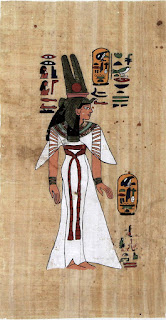In the early days of civilization, people wore animal skins for warmth. With the development of agriculture, people began to wear clothes made from animal skin and wool. These clothes were very warm and had good protection against the cold.
The history of fashion is a
fascinating one. It's not just about changing trends and styles, but also about
the cultural and political changes that have shaped our world since the
beginning of recorded time. Western fashion has always been a part of western
culture, but it's only recently that we've become aware of how much influence
it has had on our lives.
As time passed, people began
to wear more and more clothing. They made clothes out of cotton, silk, wool,
linen and other materials that could be dyed in many colors. The Romans were
among the first people to wear wide-sleeved tunics that covered their entire
arms and legs. This was a sign that they were becoming civilized because they
had lost some of their wild ways.
The first recorded use of
the word "fashion" was in 1009 AD when it was used to describe a way
of dressing or dressing up. In fact, it's thought that the word came from
Italian, which means "to make" or "to do." The word
"fashion" became more widely used by 1460 A.D., when it was used in
reference to cloth or clothing.
The Vikings came to North
America in 1000 AD and began trading with the natives. They introduced European
clothing styles to North America such as shoes with high heels and skirts with
petticoats underneath them. The Europeans also brought new fabrics such as
velvet and silk brocade which became popular among Native Americans because it
was comfortable to wear in warm weather conditions (Bishop 2012).
It is believed that Egyptian
women invented headdresses and dresses with colorful fabrics, embroidery and
sequins. The Egyptians also developed a type of shoe called
"sandals". These shoes had a curved shape like those we see today on
modern women's feet.
The Romans were known for
their clean-shaven faces, long-sleeved tunics and sandals. They wore their hair
long and would often have their heads shaved as a sign of mourning.
According to Roman historian
Pliny the Elder, men would wear loincloths and sandals made out of leather or
cloth over their bare feet as well as toga-like garments that had no sleeves or
buttons (Gray). He also describes how women would wear long skirts with
embroidered tops that flowed down to their ankles or longer tunics tied around
them with belts. In addition, women would wear long hair tied back into a bun
while men wore short hair on top of their heads and would sometimes grow
beards.
The first civilizations in
Europe also introduced new kinds of clothing for men and women such as long
robes for priests or soldiers, tunics made from linen cloth and leather pants
called "chitons" worn by wrestlers or athletes.
Western fashion has been
around for a long time. In the beginning, clothes were made by hand and were
used to identify people of high status or power.
Clothes were expensive and
only the wealthy could afford them. The rich wore expensive clothes, while the
poor wore plain clothes.
It wasn't until the
Industrial Revolution that mass production of clothing became possible,
allowing more people to have access to quality clothes at lower prices.
The
birth of Western Fashion
The term "fashion"
was first used in English in 1375. The Oxford English Dictionary lists the
earliest instances in the mid-15th century, describing it as "the kind of
clothing worn by particular persons," or "the style of clothing worn
at that time." By 1550, it was being used to refer specifically to a
person's characteristic style of dress.
Fashion often reflects
changes in the economy, politics, ethics, philosophy, arts and culture. In the
modern era, Western fashion has changed from a largely utilitarian style to a
form focused on look and perceived beauty. It is also associated with changes
in women's roles, interests and activities; the segregation between male and
female spheres; changes in the workplace; and many other societal phenomena.
A turning point in fashion
occurred when mass production made ready-to-wear garments available to
everyone. In the mid-1800s, men's formal wear transformed from being finely
tailored suits in traditional fabrics to more modern styles with broad cuts and
colors that were less formal and more casual. At this time women began wearing
dresses with skirts that were longer and fuller than those worn before. The
trend toward shorter skirts continued throughout the 20th century (it is still
going strong!).'
Although there are many
different aspects to fashion, it can be divided into three main categories:
clothing, accessories, and footwear. Each category has its own set of
subcategories that can be further subdivided.
Clothing
A clothing category includes
articles worn on the body such as socks and shoes, as well as accessories like
hats and scarves. Clothing is made from natural materials such as textiles or
leather, or man-made materials such as nylon or polyester. Clothing can be
designed for a specific purpose, such as athletic wear or formal wear. Clothing
has been around for thousands of years in many different cultures all over the
world.
Accessories
Accessories include items
that are worn on top of other clothes, often acting as another layer that helps
protect an article from damage caused by weather conditions, wind resistance or
other factors. Accessories include belts, hats and scarves among others. The
term "accessory" comes from the Latin word accessorius meaning
"additional". Accessories were originally used to help keep warm
during winter months but have since evolved into more fashionable forms of
outerwear which can be worn year round by both men and women alike!
The Western fashion industry
is worth millions and millions of dollars . The world of fashion has a new
face. Young designers from all over the world are designing clothing to come
and show their creativity. The new trends of fashion keep coming in every
season. Western fashion companies and organizations can step forward for the
benefit of fashion in western culture. Modern and old both fashions are looking
better because of this trend. New materials like polyester and nylon have made
clothes more comfortable and durable.
Also Read:











11 Comments
history of Western fashion is interesting
ReplyDeleteHalloween is quickly approaching, and I've been considering wearing a Yellowstone-themed costume this year. The show's tough yet fashionable attire makes it the ideal option for embracing that Western vibe. Who else is eager to design their Yellowstone Halloween Costume?
ReplyDeleteWestern dresses are all about comfort and fashion! The breathable fabrics and trendy cuts make them ideal for both everyday wear and parties. Do you think comfort plays a big role in their popularity?
ReplyDeleteThis article offers such valuable insights! It’s always refreshing to read something informative like this. Speaking of unique styles, have you seen the Rip Wheeler Jacket? It’s a perfect pick for Yellowstone fans. The Rip Wheeler Cotton Jacket blends rugged charm and adventure effortlessly. Thanks for sharing!
ReplyDeleteInspired by the bold Western style of the hit TV series Yellowstone, Yellowstone Coats by America Outfits combine rugged durability with timeless elegance. These coats are designed for comfort and functionality, featuring high-quality materials and authentic ranch-inspired details. Perfect for fans and lovers of classic Western fashion, Yellowstone Coats let you showcase the adventurous spirit of the Dutton Ranch while staying warm and stylish.
ReplyDeletethis looks elegant check this out Harrison Ford Jacket
ReplyDeletei recomment this jacket it has the best cutting Yellowstone 1923 Jacket
ReplyDeleteGreat article! Moving can be such a hassle, especially in a busy city like Dubai. I recently used a Dubai moving company that offered complete relocation services at a surprisingly affordable rate. The team made the process smooth and stress-free.
ReplyDeleteDubai moving company
Shifting can be done single-handedly. But at the end of the day, it will leave you totally tired and if not with a bad backache. So why take these hassles when you have able and proficient services of Movers and Packers
Delete. Super E-Movers and Packers in Dubai have a team of the highly professional workforce. They are well experienced and their knowledge in shifting is beyond any doubt. From the moment you assign them this mammoth task, they will guarantee that all your personal good, valuables and belongings are transported in the most secure and safe manner. Their packing and moving and later unloading process are done in such a manner that there are no damages caused to your things.
Turn heads with a stunning Beth Dutton dress that captures the fearless charm of Yellowstone’s leading lady.
ReplyDeleteFrom coding to coursework, Matlab help offers expert solutions. Studyfull supports essays, reports, and study material for top performance.
ReplyDelete